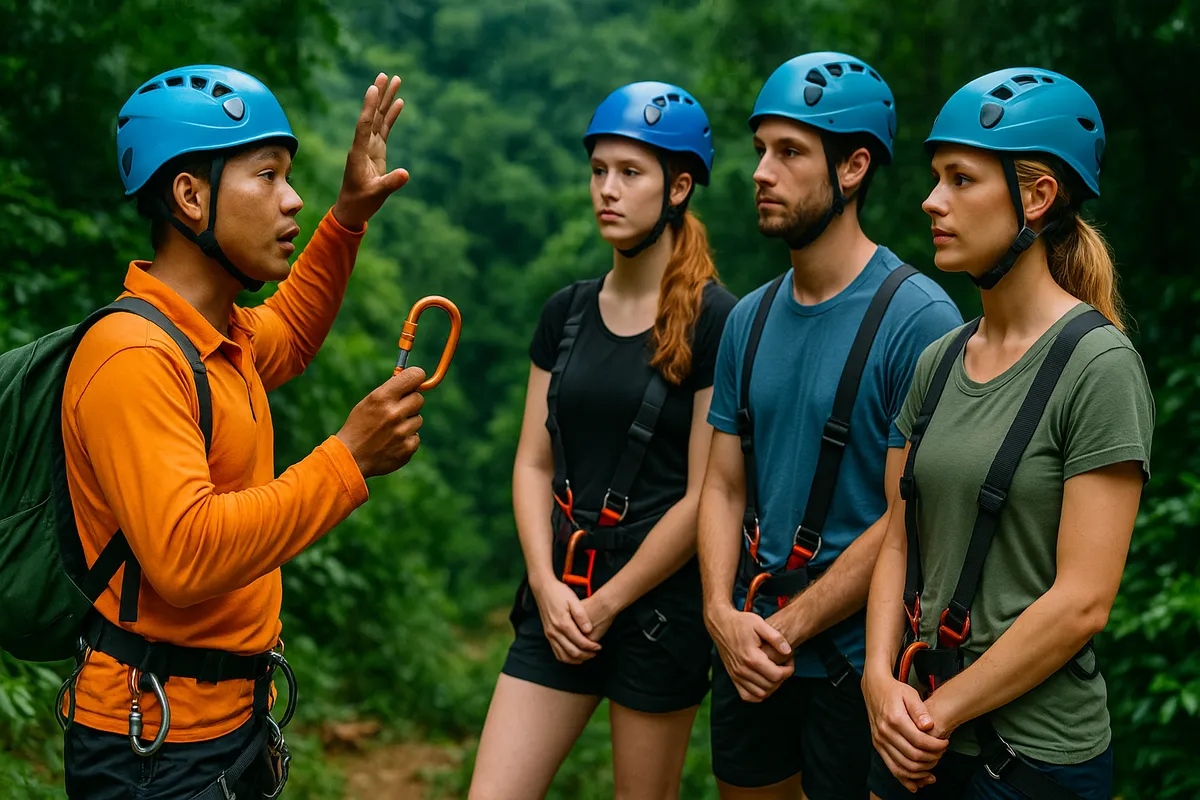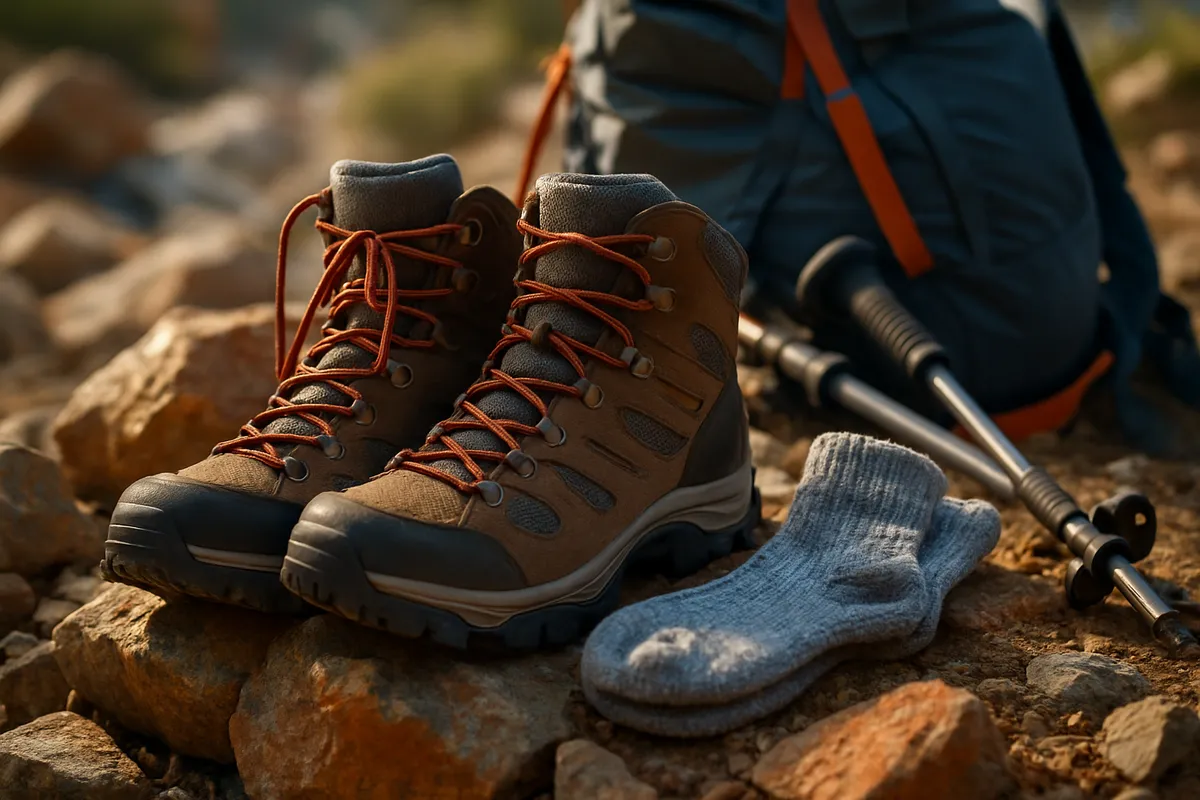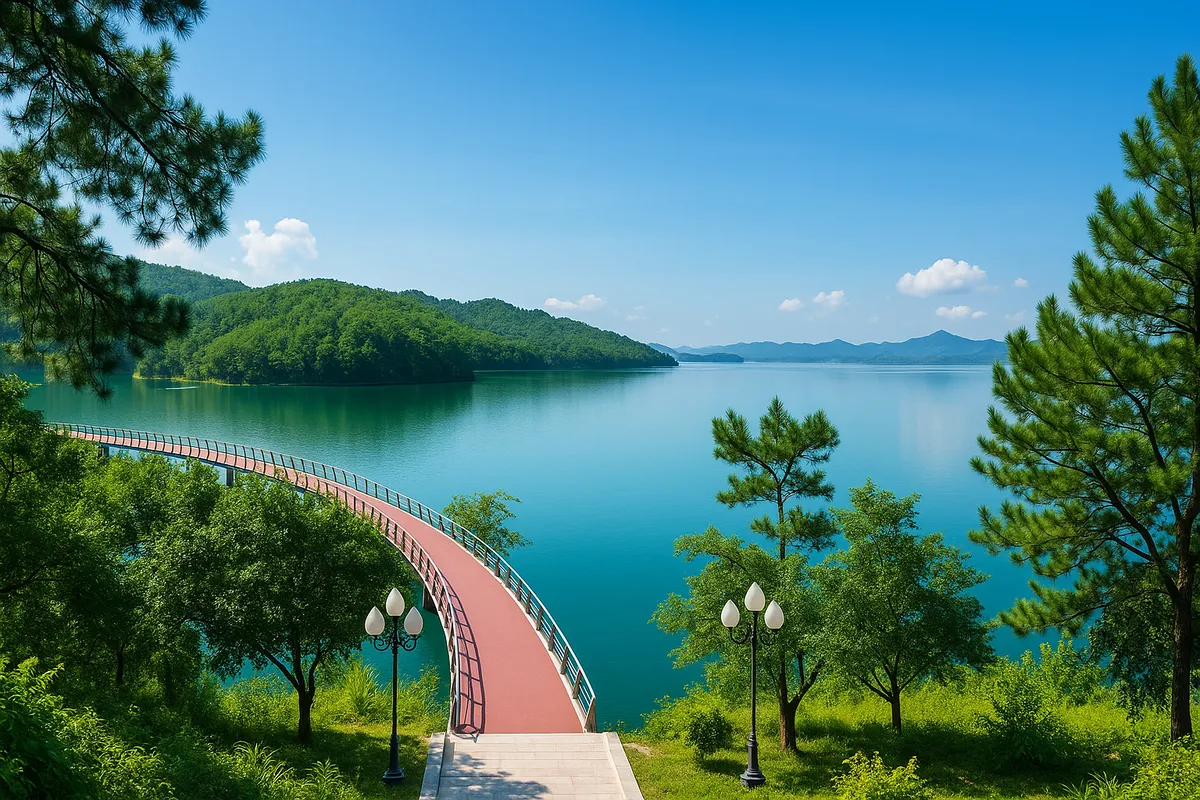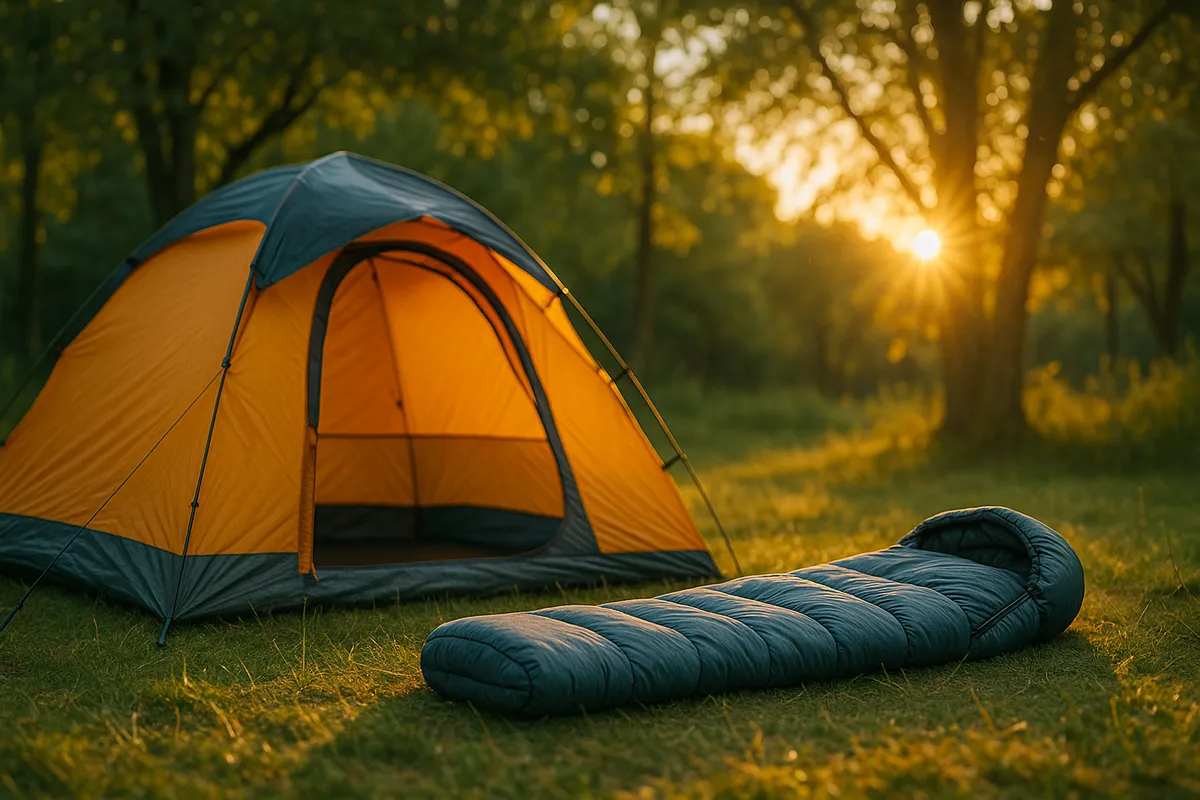How to check the safety of adventure tours
- Wednesday, May 14, 2025, 21:31 (GMT+7)
How to check the safety of adventure tours
Not everyone realizes that behind the breathtaking adventure photos on social media lie hidden risks that can emerge in a split second. From leaping off waterfalls during canyoning, gliding across forest zip lines to venturing into dark caves or swimming in swirling currents, each activity demands careful preparation in terms of physical readiness, mental focus, and safety awareness. But how can you truly assess the safety level of an adventure tour when marketing promises often reveal only the surface? Many accidents have occurred due to poor equipment, inexperienced guides, or organizers who cut corners. This is why it is essential to understand and recognize the safety standards behind each journey.
The first clear signal comes from how the pre-tour briefing is conducted. A professional operator will never skip technical instructions, equipment introductions, dry land training, or simulations of possible hazards. If the guide rushes through everything and pushes the group to start immediately, that is a sign to be cautious. There have been real incidents where participants were injured simply because they did not know how to brake on a zip line or fasten their harness properly. All of these could have been prevented with a proper training session.
Next, pay attention to equipment checks. Items such as safety ropes, helmets, carabiners, life jackets, zip lines, and climbing gear all have expiration periods and must be inspected before each use. If any item appears worn, faded, or slightly damaged but is still handed out, that is a serious warning sign. Experienced guides often double check every single piece, tighten all fastenings, and ensure the clips are locked, instead of just distributing gear and letting guests figure it out on their own.
One discreet but powerful way to evaluate a tour is by observing the guide's attitude and behavior. Those who have led many adventure tours tend to be very thorough, methodical in their preparation, and willing to stop and assist each person. They do not joke around when handling safety gear, do not rush guests, and never show overconfidence when things go off-script. If the guide looks unsure, cannot answer technical questions, or avoids discussing insurance, you may want to reconsider joining the tour.
Travel insurance is often overlooked, but it is a crucial safeguard. A reliable adventure tour must include a specific insurance package that clearly defines compensation terms and coverage scope. Ask detailed questions about the insurance provider, the claim process in case of accidents, whether emergency costs are covered upfront or reimbursed later. If the company gives vague answers or fails to provide documents, you are taking a serious risk.
You should also check whether the tour is officially licensed by the local authorities. Activities such as stand up paddle boarding, waterfall trekking, and mountain climbing usually require permits issued by the Department of Culture and Sports or local government agencies. Some tours operate without permits, hire untrained seasonal guides, and lack professional rescue protocols, putting participants in unnecessary danger.
A simple but smart tip is to quietly observe other guests. If the group consists of local people, returning customers, or those who seem familiar with the guides, that often signals the tour has real credibility. On the other hand, if everyone is new, unaware of the procedures, and still being rushed to start, be skeptical about the professionalism involved.
Weather is a major variable in adventure travel, yet not all operators are honest about it. Some will proceed even during heavy rain, slippery trails, or rough seas, just to avoid issuing refunds. Always check weather forecasts from two different sources before departure. If conditions are less than ideal, ask about postponement or refund options. A trustworthy provider will respect your right to choose instead of forcing you into dangerous situations.
Do not underestimate the value of community reviews, but read them wisely. Look for comments that specifically mention safety procedures or how guides handled unexpected problems, rather than focusing only on star ratings or beautiful photos. Long, descriptive reviews often offer more reliable insights than brief emotional praises.
In specialized tours such as cave exploration or deep sea diving, check if the guides hold professional certifications. Some activities require international rescue licenses or permits issued by reputable organizations. If the guide is just a general tour operator assigned due to staff shortages, their ability to handle emergencies may be limited.
One small detail that shows true preparation is whether the guide brings a complete first aid kit. It should go beyond bandages and saline, including pain relievers, insect repellent, emergency communication devices, spare flotation gear, or GPS trackers in case of deep forest excursions. Such careful planning indicates not just responsibility but also real experience in dealing with challenging situations.
Another important factor is group size. Tours with fewer than ten participants usually maintain higher safety levels because guides can monitor individuals more closely. In contrast, larger tours are more likely to overlook subtle risks and struggle to control spontaneous risky behavior.
Finally, never hesitate to ask questions that might seem inconvenient. The more questions you ask, the more you learn about the operator's commitment to safety. Ask how many times the tour has run this year, how previous incidents were handled, what the cancellation policies are, and even what the worst-case scenarios might be and how they are managed. A professional company will give full answers without blaming guests or avoiding responsibility.
Choosing an adventure tour means pushing your limits, but it should never mean neglecting safety. A true adventure is one where participants feel confident and protected from start to finish. The most rewarding journeys belong to those who know how to ask the right questions, notice the smallest details, and verify everything before they set foot on the trail, whether it leads through the jungle, across crashing waves, or up mist-covered peaks.

 CHECKIN.VN
CHECKIN.VN








Share on